Earlier this week we celebrated World Habitat Day and for my blog this week I’d like to share with you one of the most amazing habitats I have experienced from my trip to Borneo at the end of July earlier this year.
As you may have already realised I’m a bit of a bird fanatic and so this trip focused mainly on birds. I should’ve probably titled this blog “some of the birds of Borneo” as there is no way I can cover every species we encountered. This area has a huge diversity of wildlife with 676 species of birds, so I am going to talk to you about some of the birds and their families that stood out for me.
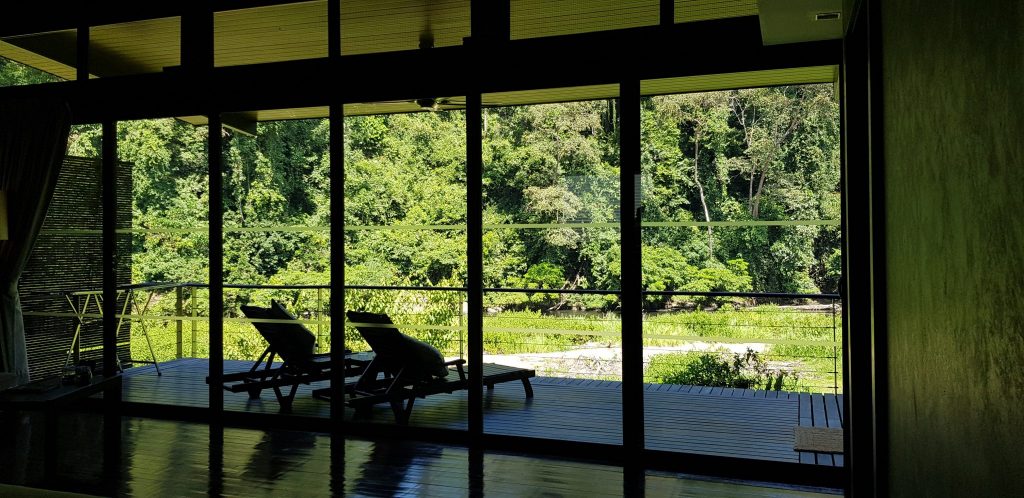
We started our tour with a company called Tropical Birding in Kota Kinabalu, the capital city in this part of the island. Borneo is a huge island and is actually shared by three countries: Malaysia, Indonesia and the tiny Brunei.
We stayed in the Malaysian state of Sabah and our adventure truly started after a journey to the amazing Danum Valley rainforest Lodge. I could’ve spent the entire time at this world class resort, the whole experience of this place was outstanding and the staff were excellent at catering for birders.
On the way to the lodge we had excellent views of Tree Swifts and needletails who would frequent the stream outside our lodge daily. Quite the sight!
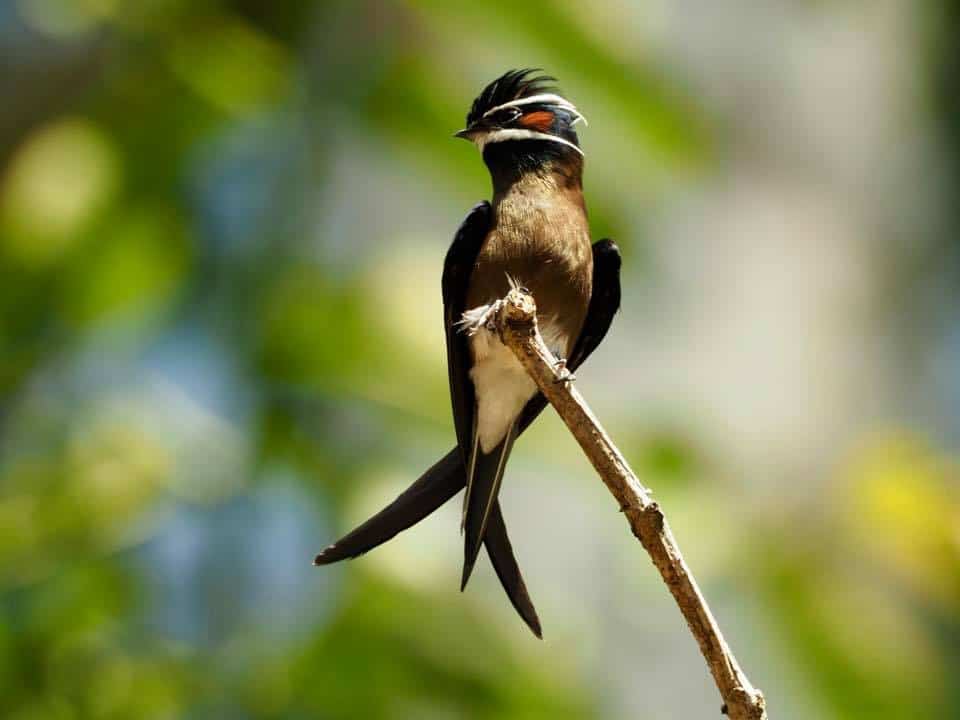
The local guides Safique and Oliver worked brilliantly with our own guide Sam. We also spent time in Sepilok where there was a large canopy walkway to take us higher into the canopy and the next stop was Sukau where the only way to explore the area was by boat along the river. We eventually made our way back to Kinabalu to explore the mountains, making a stop at the Gomantong Caves to see the nesting swifts and roosting bats!
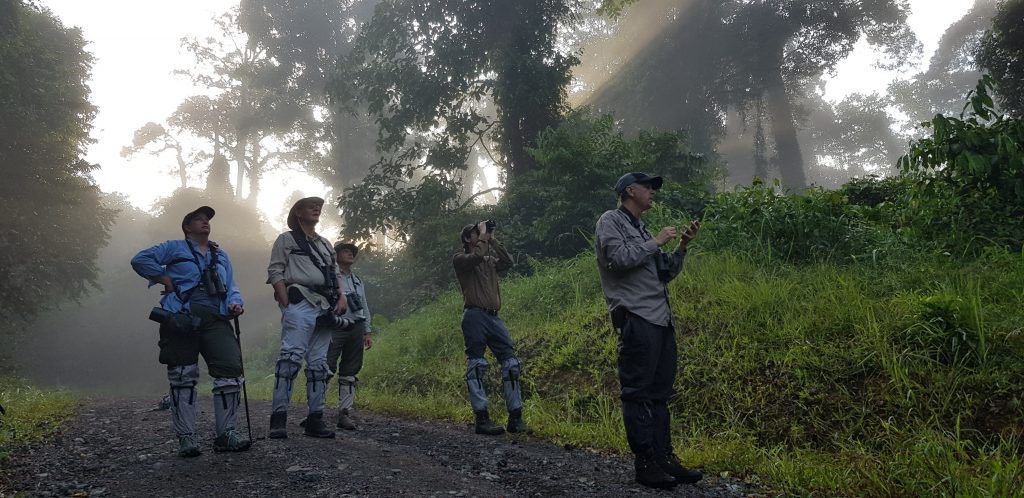
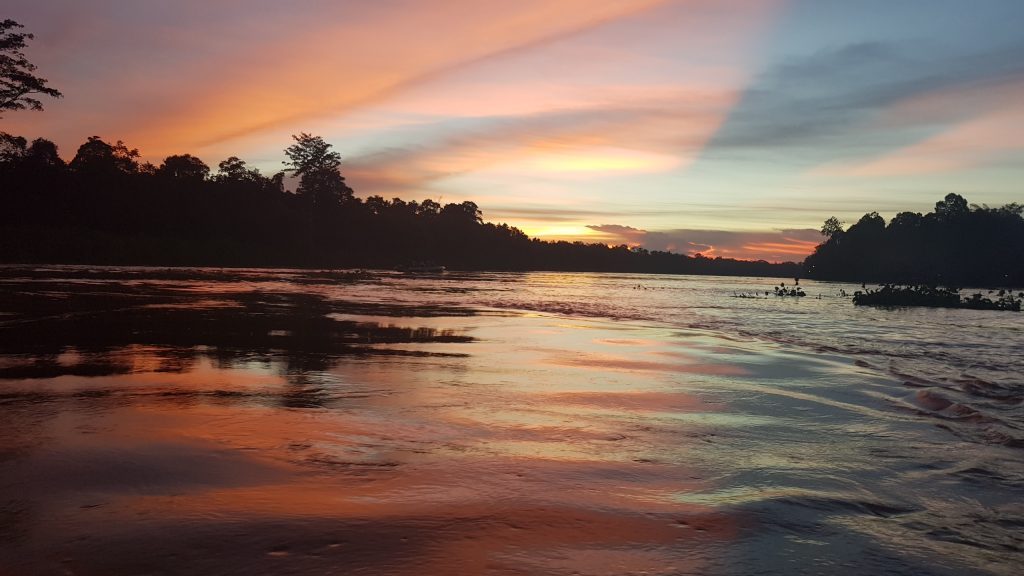
If you would like to read our full trip report click here
During the trip I saw 278 bird species, most of which were new for me (apart from the Tree Sparrows and some of the Egrets). My first sight of an exotic species were the charming Dollarbirds at Kota Kinabalu, even though they are quite common I thought they were just beautiful! And I was soon learning all about Bulbuls and Babblers!
Babblers I now know are birds with a long tail, short rounded wings and loud voices! I think there are around thirty different species of babbler. I soon discovered that I was going to come across many bird families that I was not familiar with, some of which I have listed below.
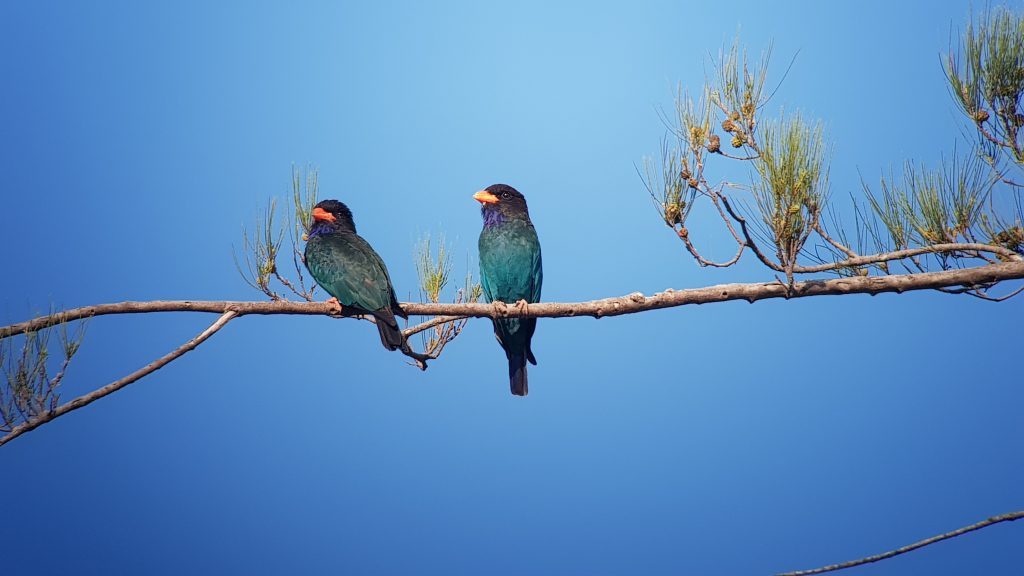
Bulbuls (Pyconotidae)
Usually we could find some species of Bulbul when we were on our hikes. This was one of the calls I did become familiar with eventually as we heard them so much! There are 25 species in Borneo and they mainly feed on berries and small fruits. We were lucky to have a Yellow-vented Bulbul outside one of our lodges most days.
Hornbills (Bucerotidae)
THE species I was hoping to see on our travels!
Their bills are shaped like a cow’s horn with a large “casque” to amplify their calls. Most of the time we heard the Hornbills before we saw them as you could hear the whooshing sound of their massive wingbeats overhead. There are 57 species worldwide ranging from Africa through to tropical Asia to the Philippines and Solomon Islands.
I was very happy as we somehow managed to see all eight species of Hornbill in Borneo! The White-crowned was probably the most stunning (and the hardest to find), Rhinoceros Hornbills were spotted frequently but I think the best moment for me was watching a Black Hornbill sunning itself and preening in a tree, allowing me plenty of time to watch it through my telescope.
Kingfishers (Alcedinidae)
The Kingfisher is one of my favourite birds here in the UK, so it was absolutely fantastic to see such a range of different species on the trip.
Of the 12 species in Borneo we saw six. Many of the species here actually feed on insects, crabs, amphibians and reptiles. Kingfishers beat their prey by whipping it against a tree or by dropping it on a stone before consuming it. You can see our Kookaburras do the same thing here at the Park, they are after all the heaviest members of this family.
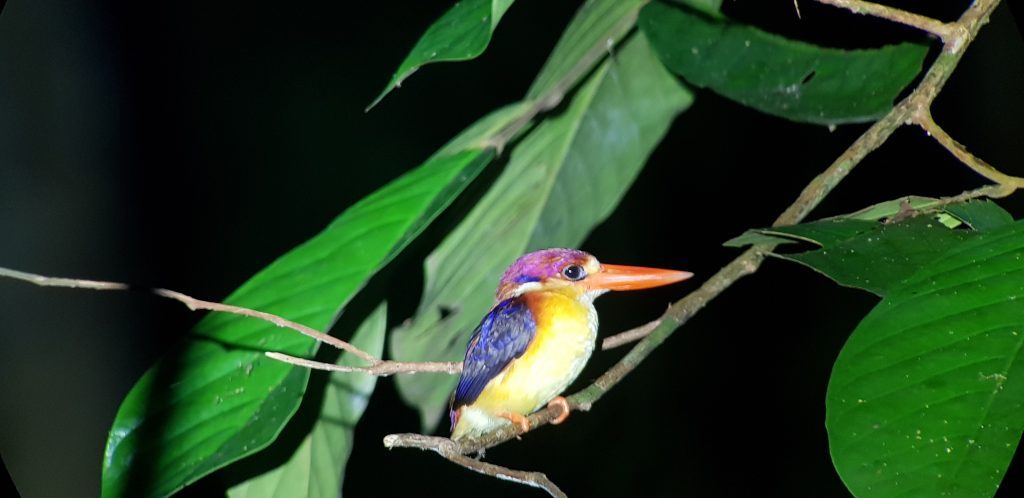
Drongos (Dicruridae)
I absolutely fell in love with Drongos! The Greater Racket-tailed Drogo was probably the most impressive with long tail streamers with racket-shaped ends which it uses for display. But my favourite was the Ashy Drongo feature in the photo, a very noisy family of birds with six species found on the island.
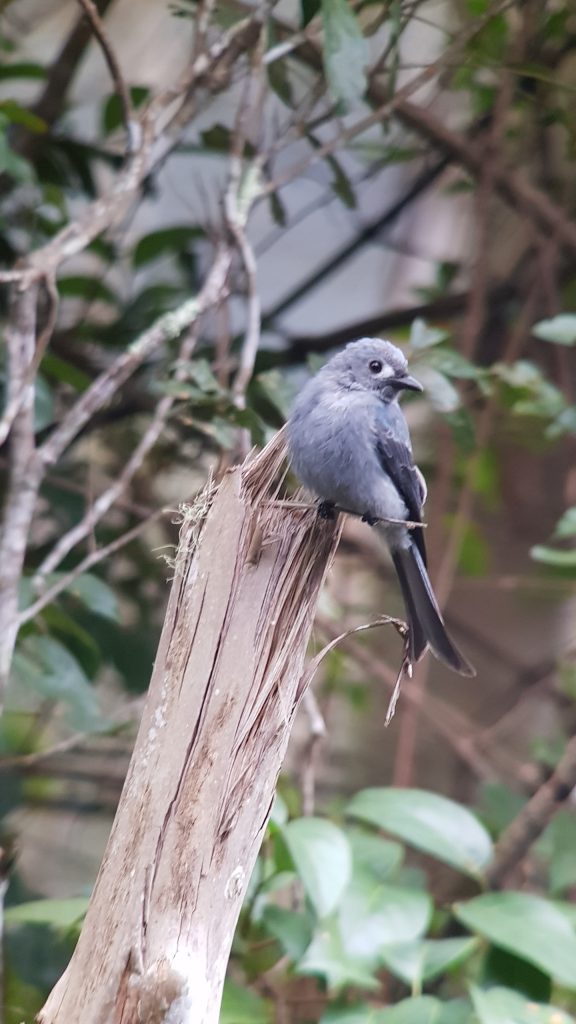
Trogons (Trogonidae)
Borneo has six of the 39 species of Trogons around the world, all of which are insect and fruit eaters.
The word “trogon” is Greek for “nibbling” as they gnaw holes in trees to make their nests.
Trogons were quite hard to find and often we only got a glimpse before they quickly flew away. But on two occasions Trogons found us! After carefully checking though the undergrowth with our binoculars, somehow they were sneakily sat above us watching contently above, posing well for the photographers in our group.
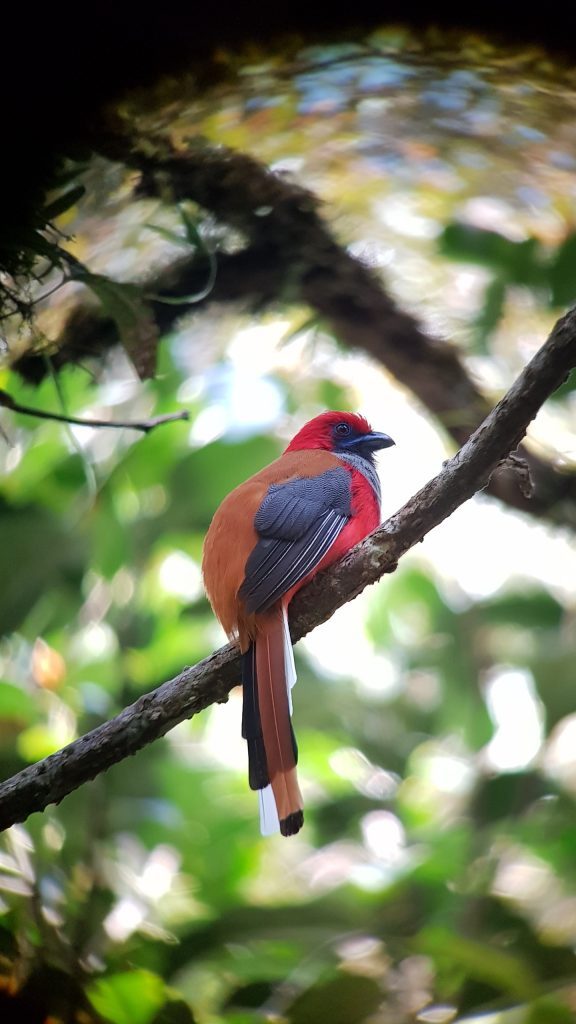
Broadbills (Eurylaimidae & Calyptomenidae)
Borneo certainly is a hotspot for Broadbills with eight of the world’s 13 species. Most are insect-eaters, using their wide beaks to grip, tear and swallow their large prey. We were super fortunate to find a nest of Whitehead’s Broadbills allowing us insane views of the adults on the nest and around it. We also passed a nest of a Black-and-red Broadbill, a bird with a striking blue bill. The nest was suspended from a stick emerging out of a raging river!
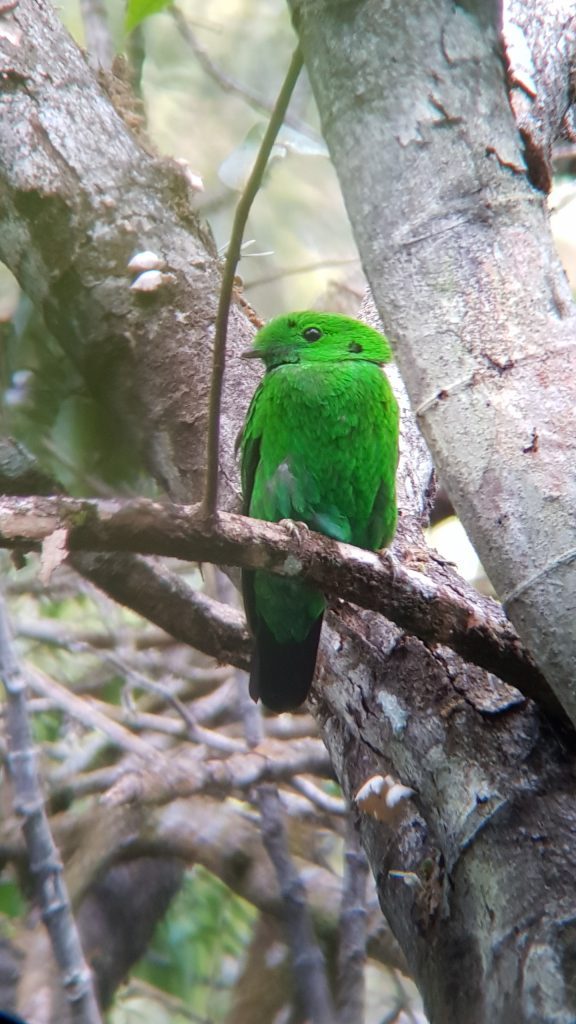
Barbets (Ramphastidae)
Borneo has ten species of Barbet and three of these are endemics. We were fortunate enough to see eight of the Barbet species and two of the endemics: Golden Whiskered Barbet right at the beginning of the tour in Danum and the incredible Bornean Barbet right at the end on our last stop at Kinabalu. I was quite proud to spot the Bornean Barbet and you can see in the photo that the group was happy with my find too. One of the prettiest was this Golden-naped Barbet and the Brown Barbet was quite interesting as it didn’t sound like any of the others at all.
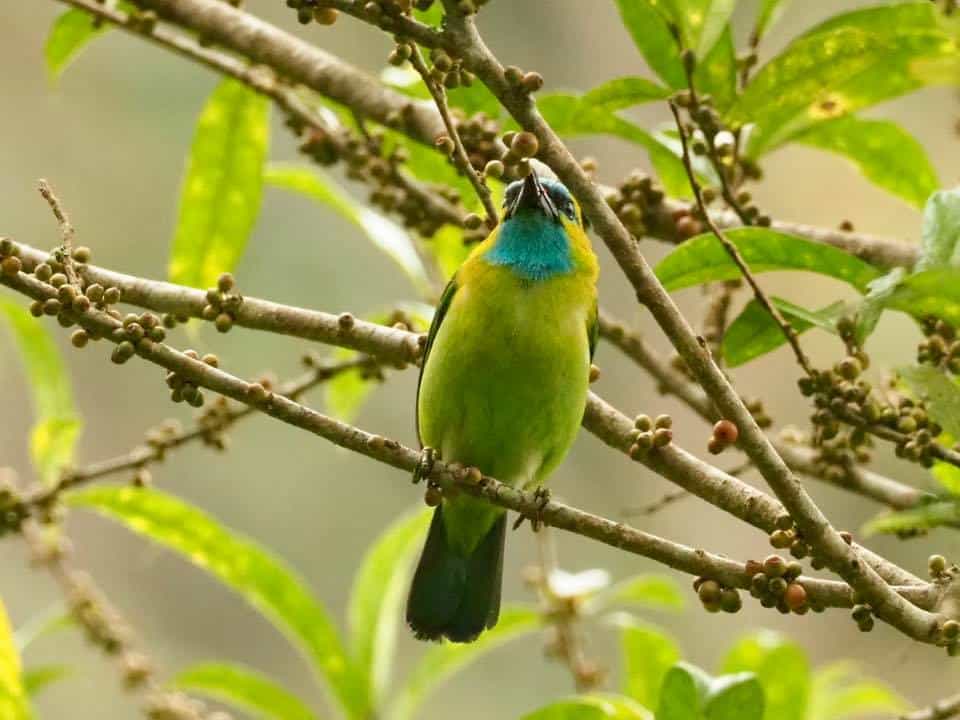

Flycatchers (Muscicapidae)
This is one of the largest bird families in the world with 328 species and are found in most habitats all around the globe. Around 38 are found in Borneo and as their name suggests they catch flying insects, but some also eat fruit. Even though it was a common bird the Indigo Flycatcher was one of my favourite birds throughout the entire trip (you’ll soon see that I really like the blue birds… something the group found very unusual!). Probably the flashiest of the Flycatchers here is the Asian Paradise-flycatcher, I was the only one to spot a male with their elongated striking white tail feathers.
Pittas (Pittidae)
One of my highlights was trying to find Pittas. Of the 31 species worldwide, Borneo has 10 species of Pittas, four of which are endemic to the island. This family spend most of the time on the floor looking for invertebrates and are quite stocky birds with long legs and brightly coloured. Probably the family of the trip for me and the excitement of waiting along a trail for a Pitta to (hopefully) walk across the path. You definitely have to have patience but it is so worth it when you see them, even if the view is usually pretty brief! On our trip we were lucky enough to see Black-crowned Pitta, Bornean Banded Pitta, Hooded Pitta and my favourite bird from the whole trip Blue-headed Pitta.
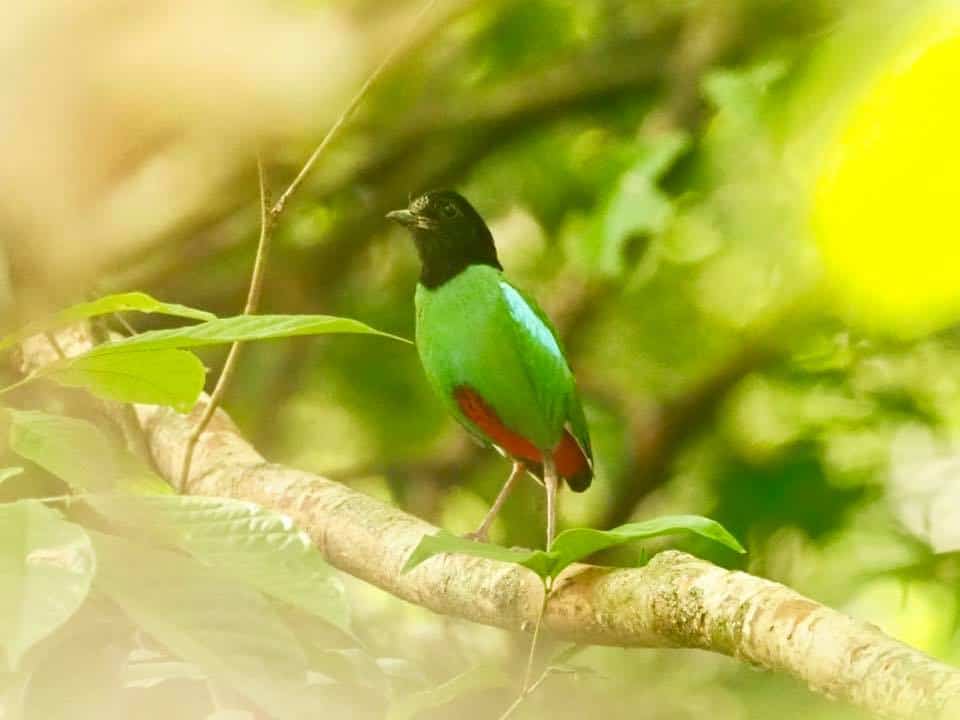
Bornean Bristlehead
Probably one of the rarest birds we were looking for was the Bornean Bristlehead, an endemic species to Borneo meaning that it is found no where else in the world. They are the only members of the Pityriaseidae family and what a treat to find them on two occasions in their homeland! I actually don’t think they are the most attractive of the birds we saw but definitely appreciated how scare they were to find, our guide certainly gave a sigh of relief when we finally found a small group of them feeding just off the road. Females look very similar to the males except for the red patches on the upper thighs. These birds were so tricky to spot this is the best photo any of us got in the end!
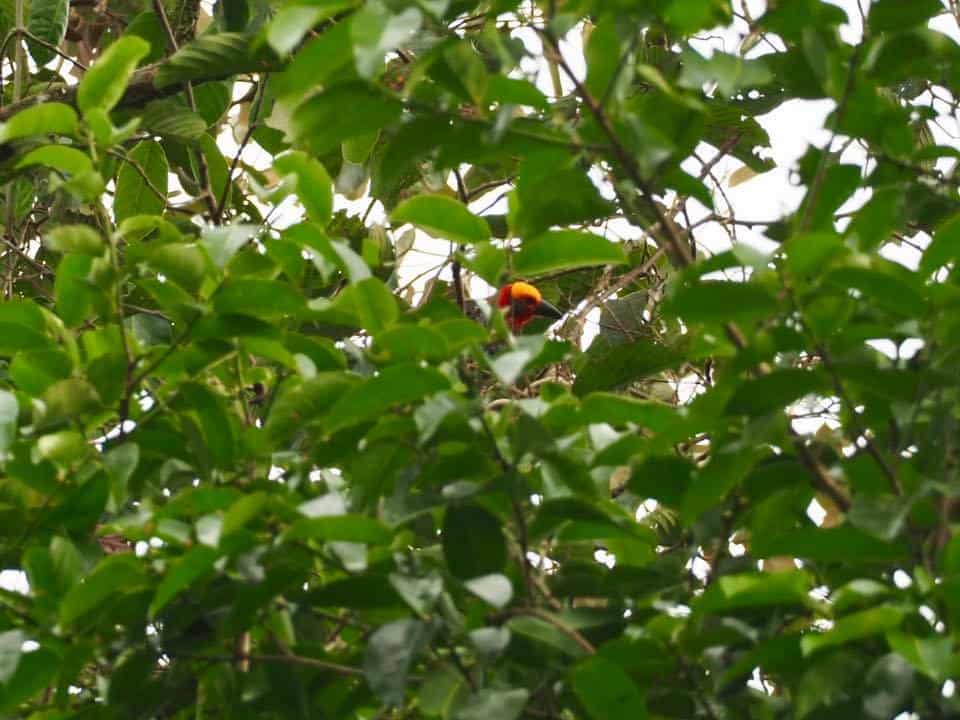
Woodpeckers (Picidae)
There are a whopping 18 species of Woodpeckers in Borneo from the tiny Brown-capped Woodpecker to the Great Slaty Woodpecker, the largest in the world. Most feed on ants and termites but a couple feed almost exclusively on beetle larvae.
Raptors
Malaysia has around 41 species of raptors, the birds of prey with strong curved and hooked beaks and strong legs with powerful talons, including hawks, eagles, ospreys and falcons. There are 39 species in Borneo and 21 are resident with the rest being migrants or vagrants (rare visitors). We saw on two occasions the world’s smallest raptor, the Bornean Falconet and Wallace’s Hawk-eagles were frequent hunters around our lodge.
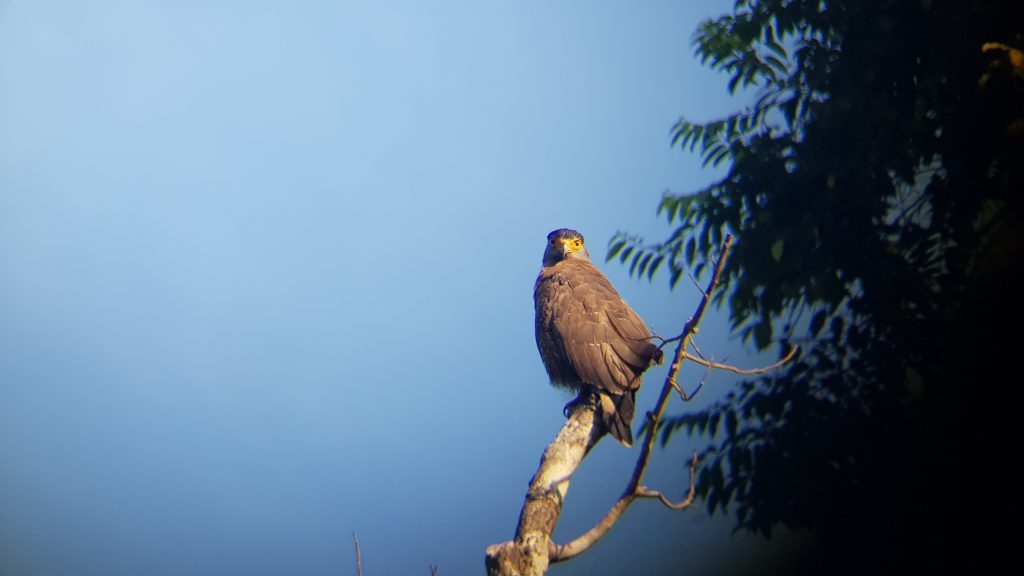
Owls (Tytonidae & Strigidae)
Borneo has 16 species of Owl and we were lucky enough to see six species, mainly on various night drives (and river trips). A couple of species we only heard calling in the darkness and these were the Reddish and Mountain Scops Owls but we did finally get a view of a tiny (and adorable) Sunda Scops Owl.
It was great to Timmy’s wild cousins as well with Boobook owls showing and calling well too. The most impressive for me was the Barred Eagle-owl with it’s impressive horns. One of these actually crashed over our dinner table one evening before being captured and released by the restaurant staff!

Frogmouths (Podargidae)
Borneo has six species of Frogmouths and you can seriously see where they get their name as their mouth splits across their face from ear to ear! They are related to the Nightjars (we sadly didn’t see any of these well camouflaged birds during the trip) and are found from the Indian Subcontinent across SE Asia to Australia. They are notoriously shy so we were more than thrilled to see two species on the holiday.
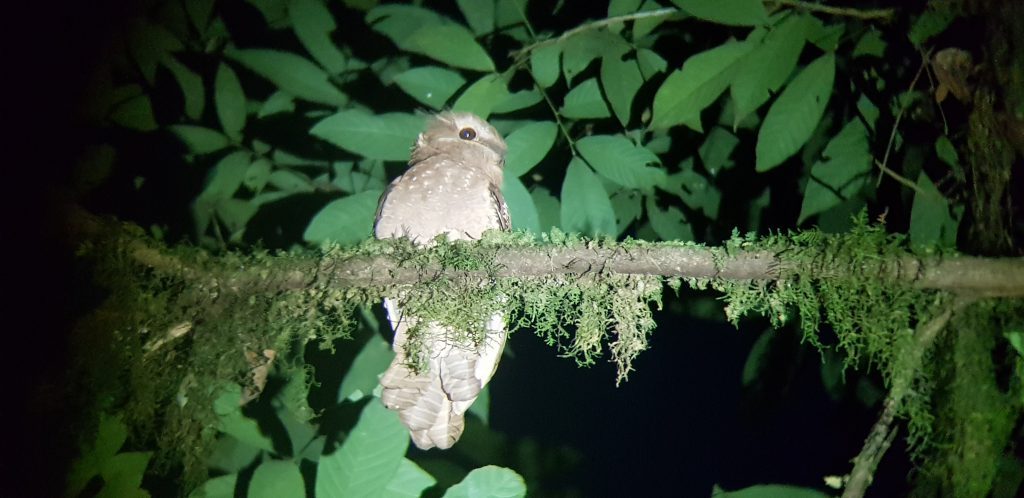
Bee-eaters (Meropidae)
I could’ve spent all day watching the Blue-throated Bee-eaters from our lodge in Danum Valley. One day they stayed for hours sunbathing and preening in a tree outside of our window. Borneo has five Bee-eater species and we saw two of these.
Sunbirds & Spiderhunters
Borneo has ten sunbirds and eight species of spiderhunter. This Crimson Sunbird was having a shower in the rain.
We spent a lot of time looking for Spiderhunters but despite their name their long curved bills of this species is used mainly for nectar feeding.
Cuckoos (Cuculidae)
We saw five species out of the 18 found in Borneo. We were ridiculously lucky to find a baby Malaysian Hawk-Cuckoo being fed by an adult Black-and-yellow Broadbill, something I will never forget. But most likely the rarest we saw was the fantastic and prolonged views of Bornean Ground-cuckoo whilst sat in a boat on the river at Sukau, a bird which until recently was thought to be extinct!
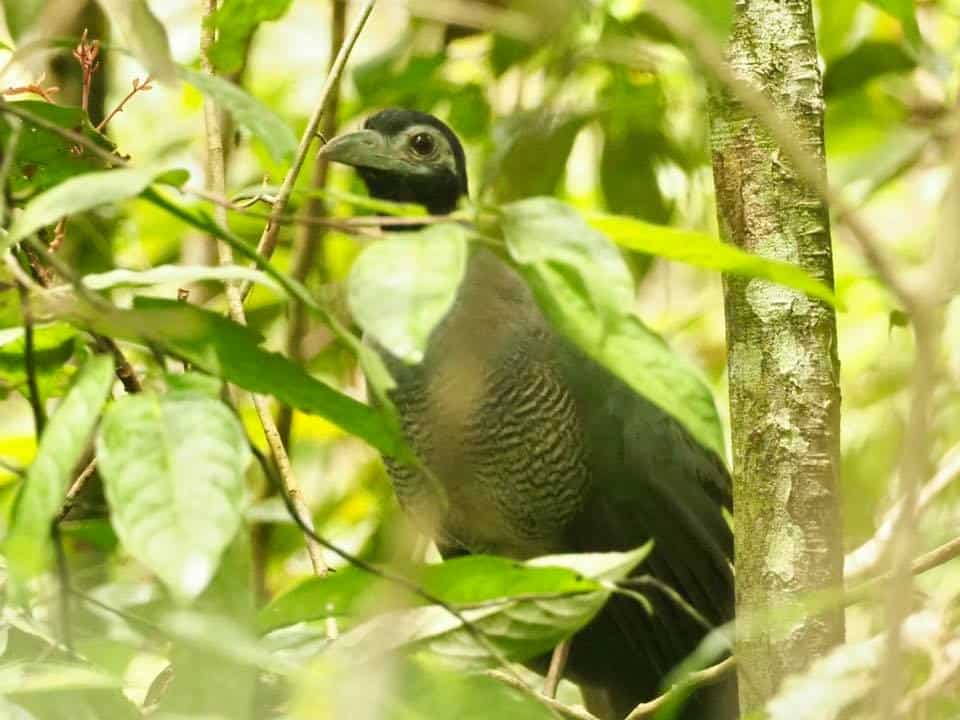
Pheasants and Partridges (Phasianidae)
One of the most magical moments for me was (sadly) being the only member of our group to spot a Great Argus mysteriously skulking past. I could only see through a tiny window of branches but I watched the entire bird pass through my binoculars from head through to it’s enormous tail. Rather like the Peacocks at the park the male birds are highly decorative and display on dancing grounds to the females, it’s a wonder how they can hide so easily! Partridges were also heard frequently but rarely seen.
We had stunning views of this endemic Red-breasted Partridge right at the end of the tour.
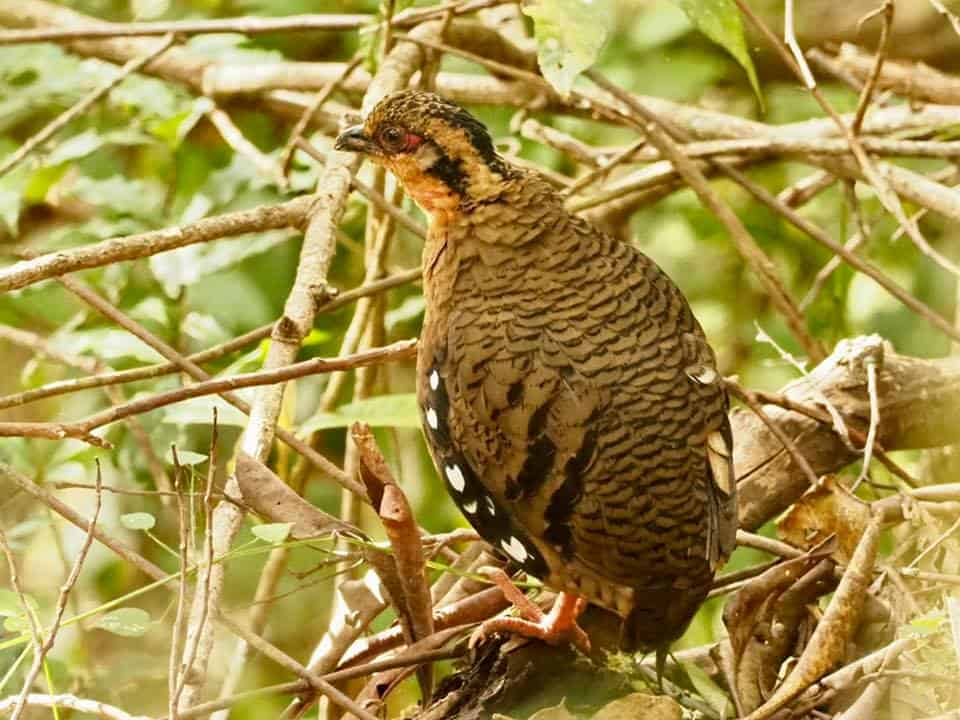
Some of the other species that I wasn’t lucky enough to get photos of I’ll give a quick mention to below.
I thought my guide was joking when he called out that we had seen a Leafbird, but I can see why they get their name as their striking green plumage was excellent at blending in with the surrounding foliage.
There are three species of Leafbird in Borneo and they are mainly fruit eaters but will also feed on nectar. The males have a beautiful song which sadly means they are often trapped illegally and used in singing competitions. We saw a Bornean Leaf bird a few times during the trip.
Another charismatic bird of Borneo was the Green Magpie, these reminded me of clowns and again are excellent mimics making them highly sought-after in the pet trade.
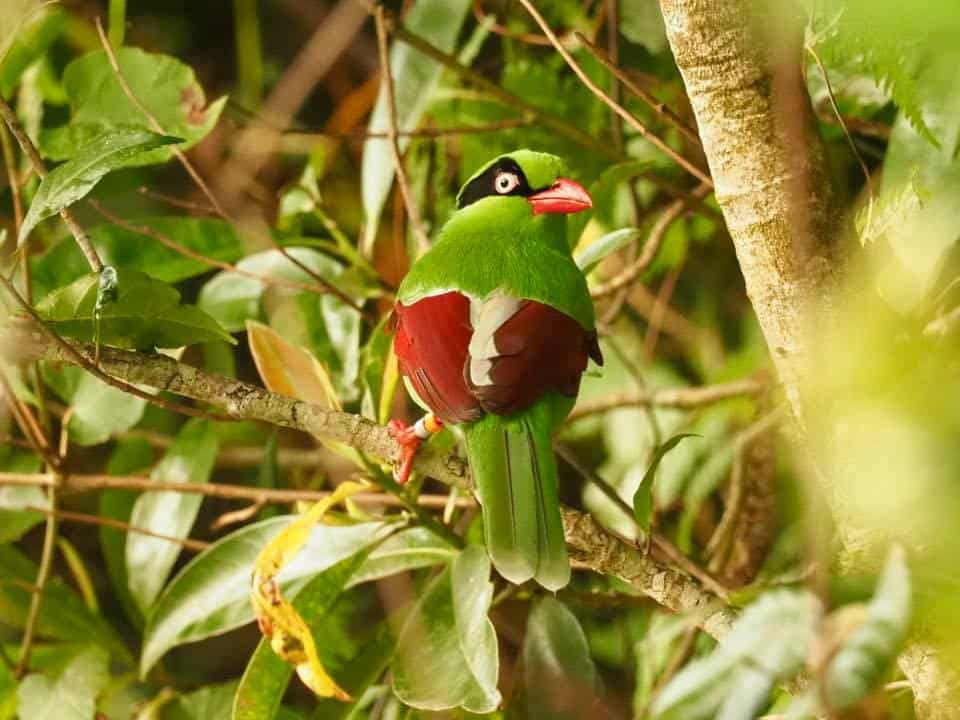
Minivets were also worth a mention as these stunning birds were bright red for males and bright yellow for females! And we haven’t even touched on the parrots, the hardest to see were the Blue-crowned Hanging Parrots, tiny little birds and their name explains their behaviour well!
Other wildlife of Borneo
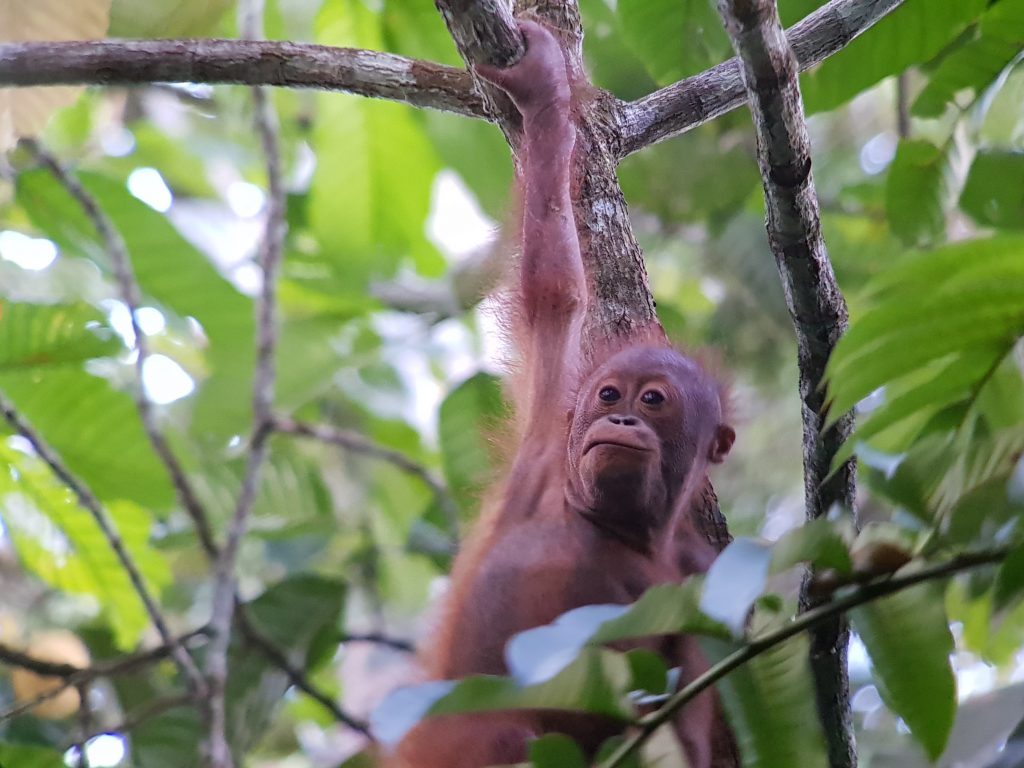
Now I can’t write a blog about Borneo without paying homage to the other species it is famous for.
Primates were a huge feature of the trip too, but the Proboscis monkeys were so characteristic with their enlarged noses and pretty special as they are only found in Borneo!
THE most amazing experiences we shared with the Bornean Orangutans where we had sightings of 16 individuals. Watching the mothers caring for their young was a very special thing to watch. We often heard Gibbons whilst hiking through the forests. All four species of gibbons in Borneo are endemic to the island and are important seed dispersers.
Some of the other species of primate we saw included Grey and Red Langurs (Borneo has three species of Langur).
We also had quite a terrifying experience with the local Pig-tailed Macaques who followed us up the treetop canopy walkway but thankfully kept themselves at a safe curious distance!
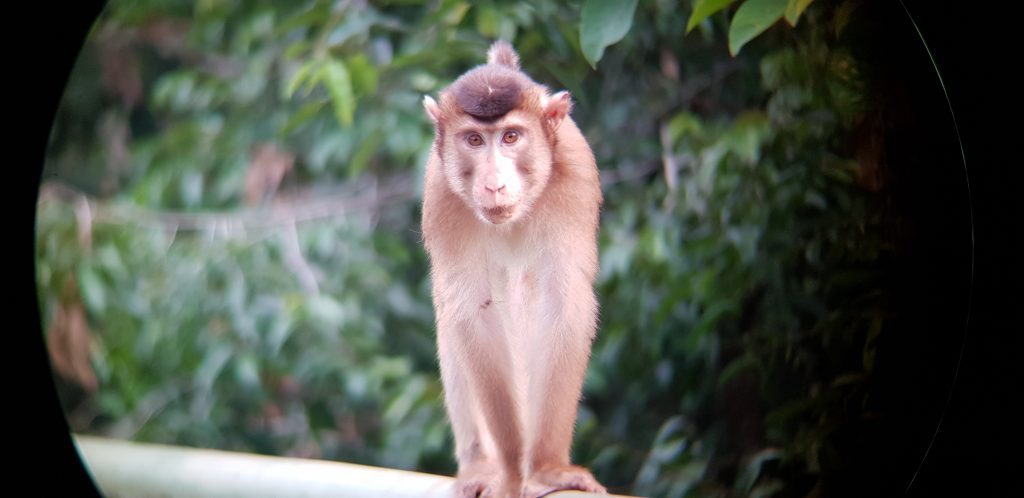
The mammal list was pretty impressive too, the flying squirrels were breath-taking, and one even leaped right over our heads, gliding to the tree opposite us.
These are mainly nocturnal so we had the best chance of seeing them at dusk as they began to wake up. We were fortunate enough to spot a Colugo (aka flying lemur) asleep at our lodge during the day! At night we also had Island Palm Civets in the trees around our accommodation, easily spotted on a walk around with a torch.
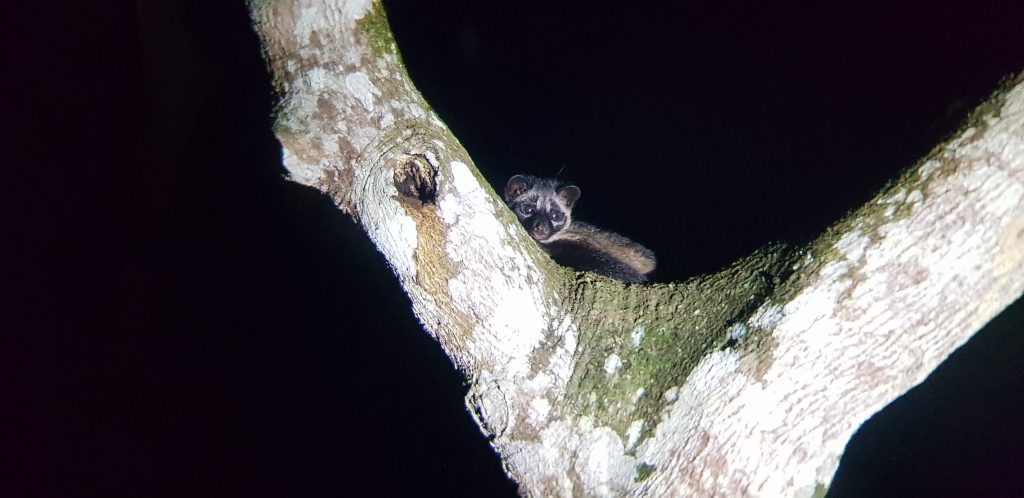
It was also amazing to see a couple of Mousedeer wander past whilst we were on a boat trip. Amazingly these deer can dive, staying submerged for over 5 minutes! There are two species in Sabah and are considered to be the smallest hoofed mammal in the world.
The squirrels are also worth a mention, the Bornean Pigmy Squirrel (which I first thought was a little mouse or a wren) was a delight to watch running from tree to tree along the spindly limbs and branches, probably the smallest squirrel in the world and another endemic to the island.
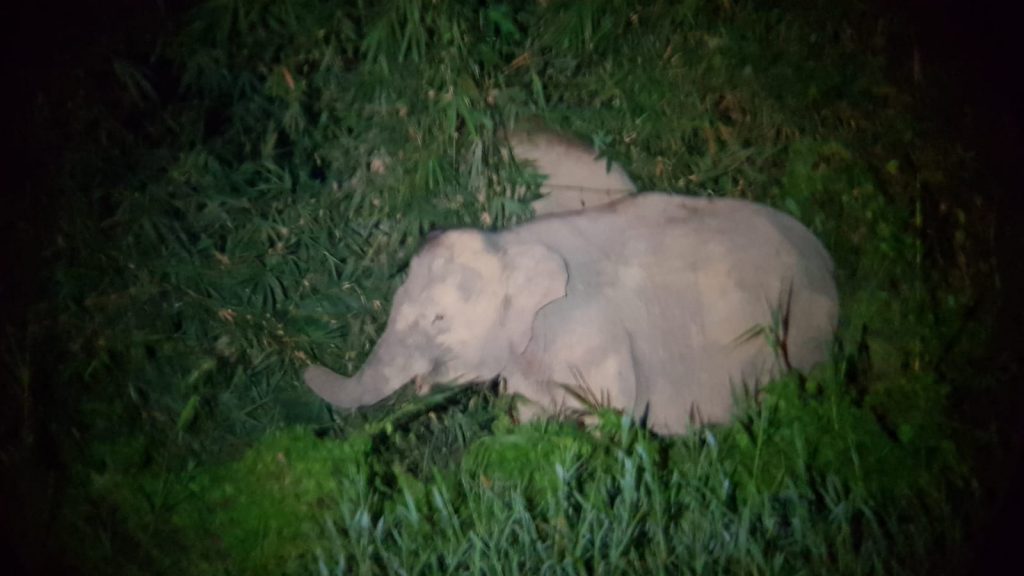
The lodges we stayed at also offered night drives where we could see some of the nocturnal animals. Highlights for me were Western Tarsier, ancient primates with huge eyes which specialise in eating insects, bats, snakes and birds!
Sambar deer were also spotted during these drives. Bornean Pygmy Elephant ticked off the last of our “big five”, just incredible.
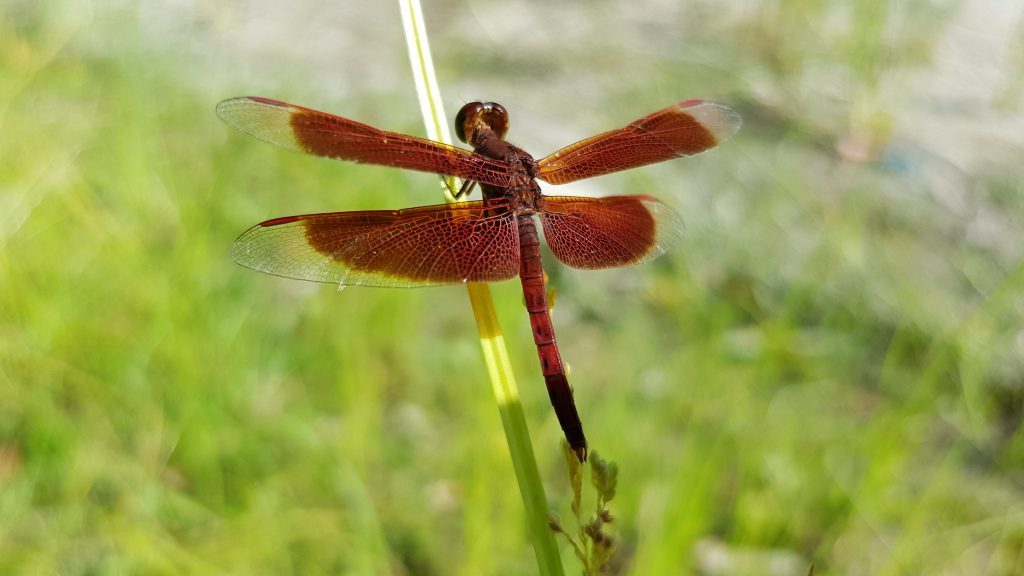
The insect diversity was just mindboggling and I am yet to identify all of the butterflies, dragonflies, beetles and moths I photographed on the trip!
And we were quite lucky with reptiles too including a tree snake, tree lizards, crocodile and even a tortoise!
Species that I missed seeing were Binturong, Clouded Leopard, Sun Bear (but this was to be expected as they are very elusive!), but I was quite disappointed that we didn’t find a Slow Loris, a cute but toxic primate! Their cute appearance like so many animals in Borneo put them at risk from the illegal pet trade.
Borneo: a beautiful island tainted by people
So overall Borneo was undoubtably an unforgettable experience and the wildlife there is truly fantastic. But it was harrowing to see the affect people were having on the island.
Between our destinations were often journeys where we would drive from one patch of forest to the next for hours through palm oil plantations. I’ve tried to avoid eating and using unsustainable palm oil for three years now, but it is so hard! Palm oil is in everything from tortilla wraps, to chocolate and even our shampoo and toothpaste!
WWP also only uses products which contain either sustainably sourced and produced palm oil, as certified by the RoundTable on Sustainable Palm Oil or which use alternative (and still sustainably sourced – such as local alternatives) vegetable oils to learn more about sustainable palm oil please click here. You can also discover the parks recent research paper about the effectiveness of sustainable palm oil certification here.
The demand for palm oil seriously drives deforestation in Borneo and threatens the animals that live there. Also along the coasts and in the more populated areas all of the streets, beaches and the sea were littered with plastic debris, a seriously upsetting thing to see as I always pictured Borneo as being this idyllic island paradise.
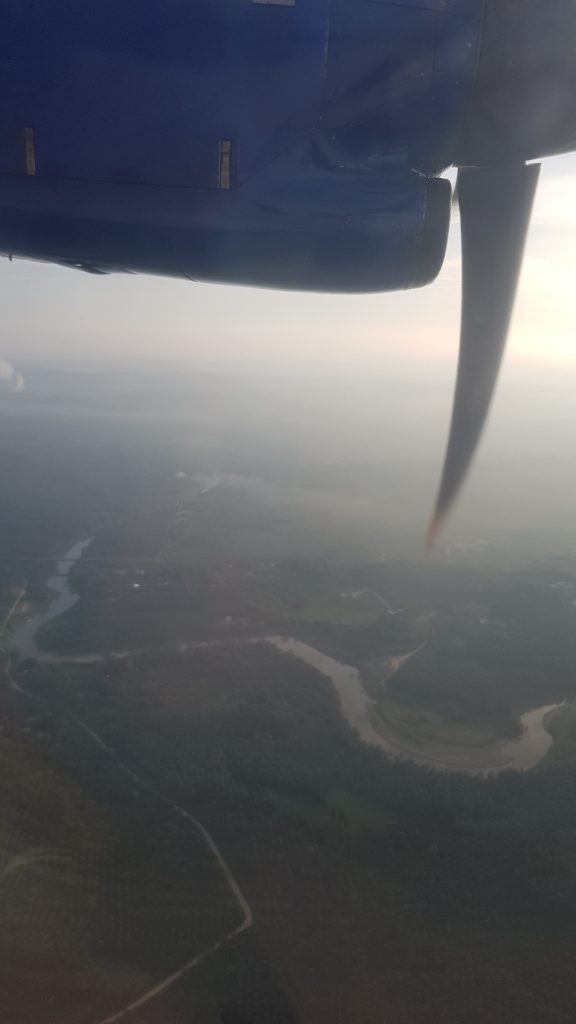
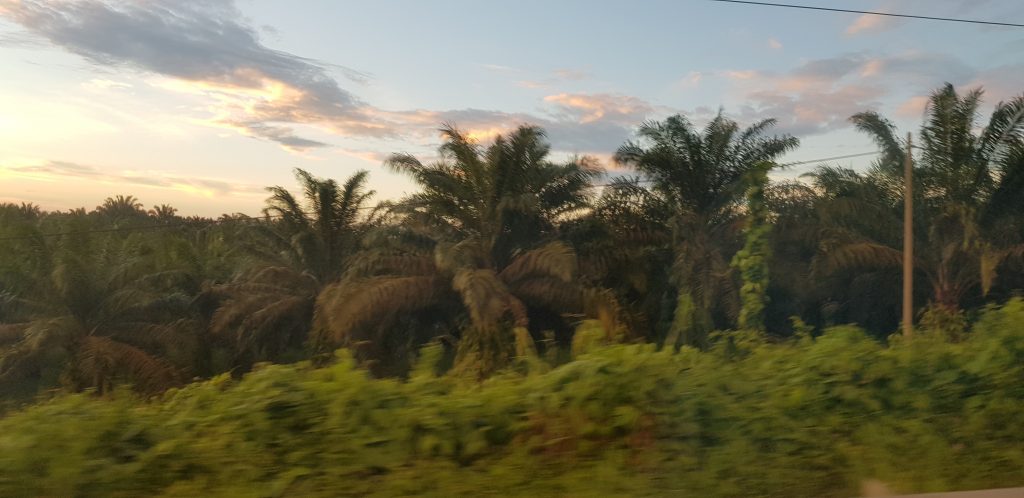
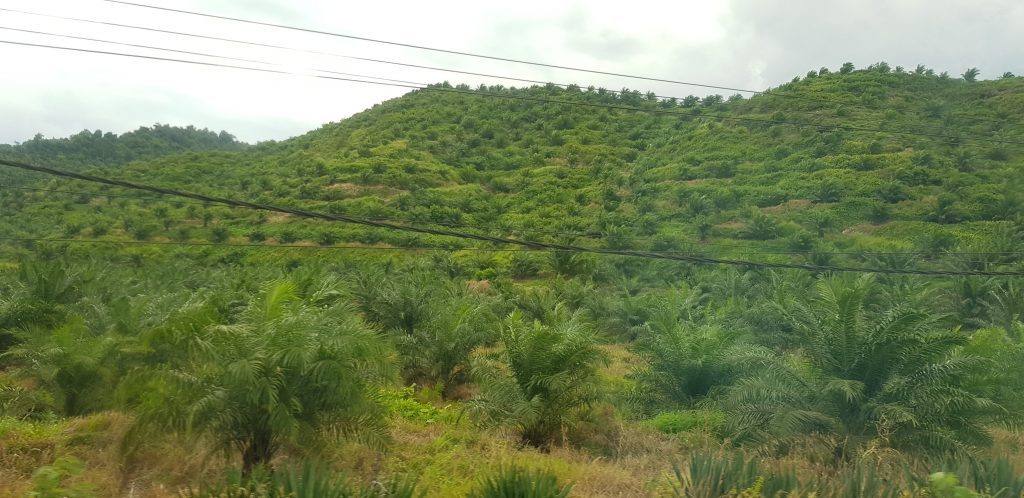
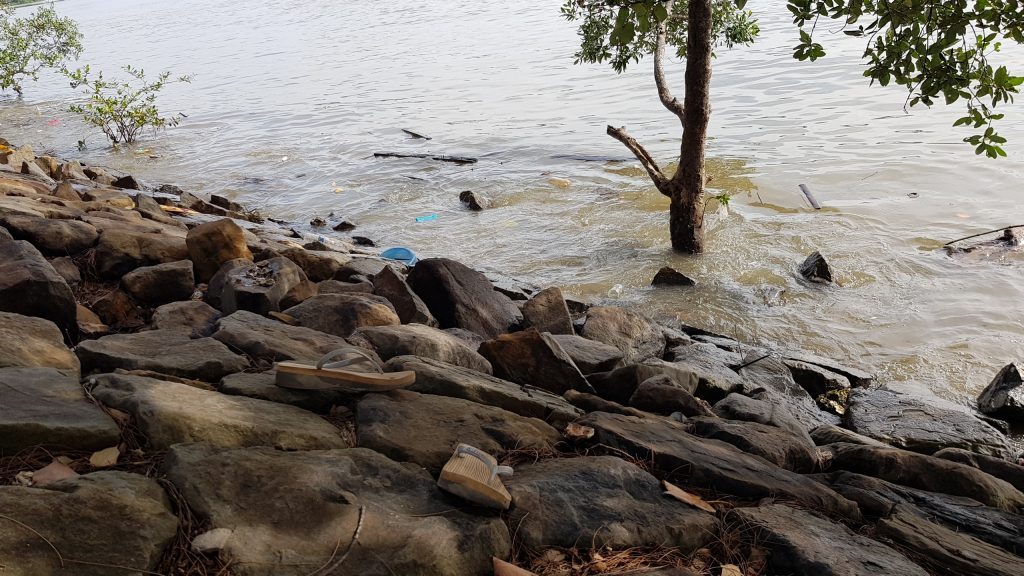
I hope you have learned something new today but for now I will leave you with a video of one of the Danum Valley leaches looking for it’s next victim… the only downside to birding in Borneo!


